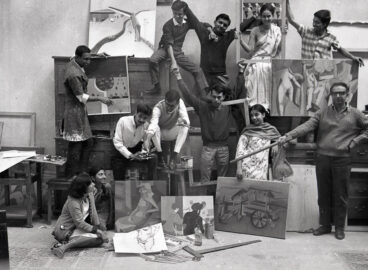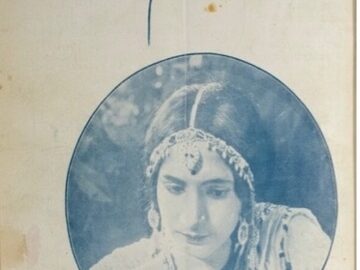Balkrishna Vithaldas Doshi was a pioneer of architectural modernism in India, and the first architect from the region to be awarded the Pritzker Prize in 2018. His work was prominently featured in the 2022 MoMA exhibition, The Project of Independence: Architectures of Decolonization in South Asia, 1947–1985, during which he participated in an online conversation with Martino Stierli, The Philip Johnson Chief Curator of Architecture and Design. Following Doshi’s passing at the age of 95, in January 2023, we are publishing this wide-ranging conversation accompanied by Stierli’s reflection on the architect’s life and legacy.
I remember vividly meeting the late Balkrishna V. Doshi for the first time at his Sangath Studio in the Indian city of Ahmedabad in January 2017. Doshi was an incredibly kind, modest, and unassuming human being, but there was something that emanated from him that people may describe as an aura — the feeling and the comfort of being in the presence of someone enlightened. It is not surprising that the great Indian architect, who passed away after a long and fulfilled life on 24 January 2023, was revered in his home country as a guru — someone who had not only made a lasting impact on the built environment, but whose wisdom also served as spiritual guidance.
Born into a family of furniture makers, Doshi’s prolific career was crowned in 2018 by the Pritzker Architecture Prize, widely considered the most prestigious accolade in the field of architecture. Long before that, he had received his initiation into modernist architecture in the Paris atelier of Le Corbusier, where he worked for several years on the Swiss-French architect’s projects in India, including the Chandigarh Capitol Complex. Having returned from France to the Subcontinent in 1954, he supervised the construction of Le Corbusier’s buildings in Ahmedabad (including the Mill Owners’ Association Building), the same city where he soon after established his own architectural practice under the name Vastu Shilpa, which translates as “environmental design.” In the decades to come, Doshi single-handedly designed a number of extraordinary buildings in his home city, as well as across India, several of which we had the fortune to present to our MoMA audiences in the 2022 exhibition, The Project of Independence. Among his many significant works are the Institute of Indology, Premabhai Hall (both in Ahmedabad), and the Indian Institute of Management in Bangalore, whose complex interweaving of interior streets and squares with shaded pergolas was not only informed by the precedent of great historical cities such as Fatehpur Sikri and Jaisalmer, but also speaks to Doshi’s championing of environmental concerns, making him a pioneer for contemporary thinking.
While in Ahmedabad, Doshi exerted his influence in bringing the prominent American architect Louis I. Kahn to the city in order to design the Indian Institute of Management, substantial parts of which remain under acute threat of demolition today. In 1962, Doshi founded and designed the Center for Environmental Planning and Technology (CEPT), which is located nearby and widely considered one of the leading schools of architecture worldwide. Besides helping conceive and realize the architecture of pivotal institutions in his newly independent nation, Doshi was attentive to social issues and built highly innovative low-cost housing projects for the poorest citizens that provided basic amenities and flexible units. Consistently, Doshi adhered to the tenets of modernism while searching for an architectural language and material expression that was at the same time firmly rooted in his country’s history and tradition, indicative of the optimism and postcolonial mindset that characterized his generation.
Martino Stierli
Cover image credit: Randhir Singh, Balkrishna Doshi, Mahendra Raj. Premabhai Hall, Ahmedabad, India. 2020-21. Digital photograph. The Museum of Modern Art, New York. Committee on Architecture and Design Funds.


